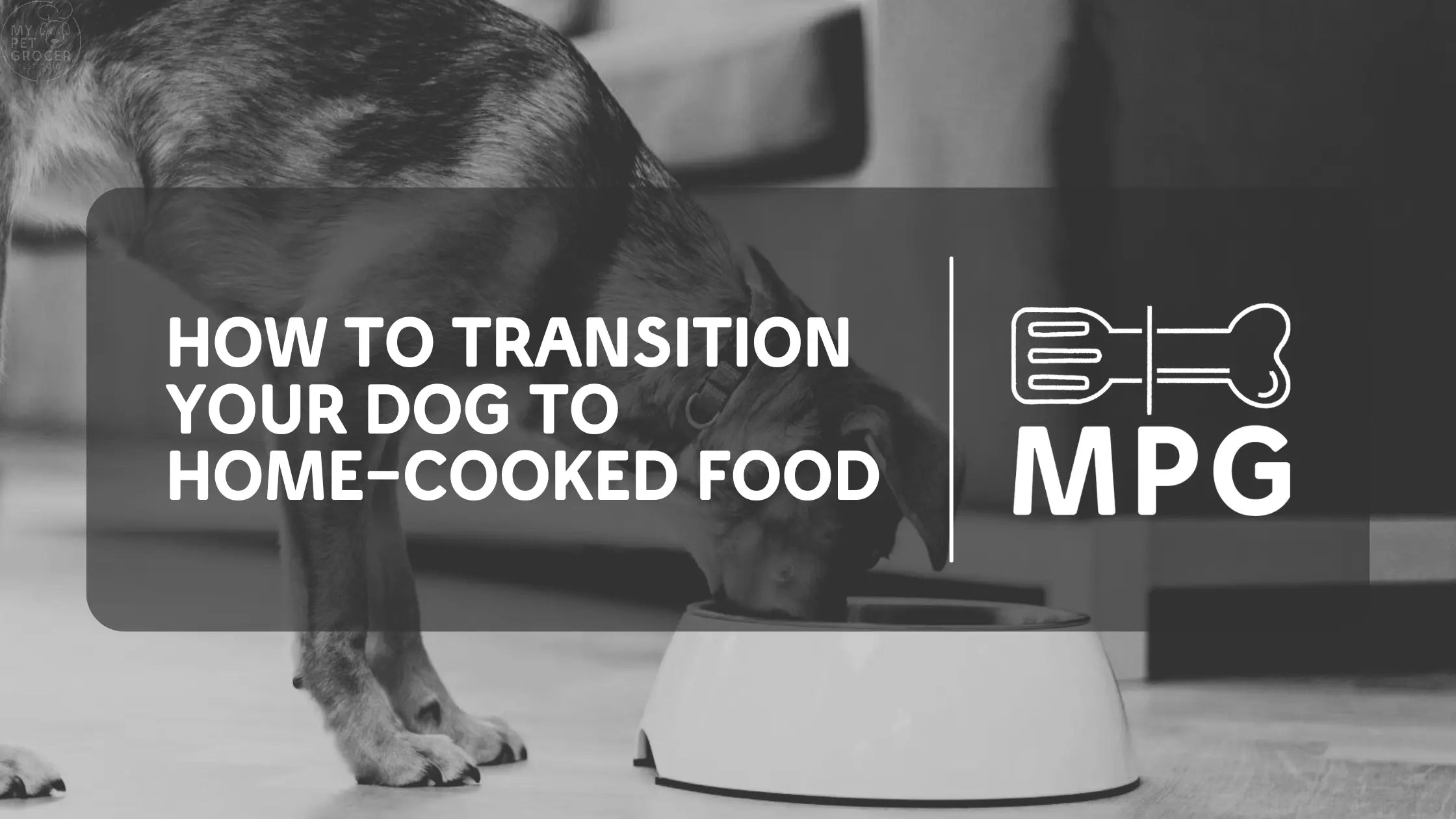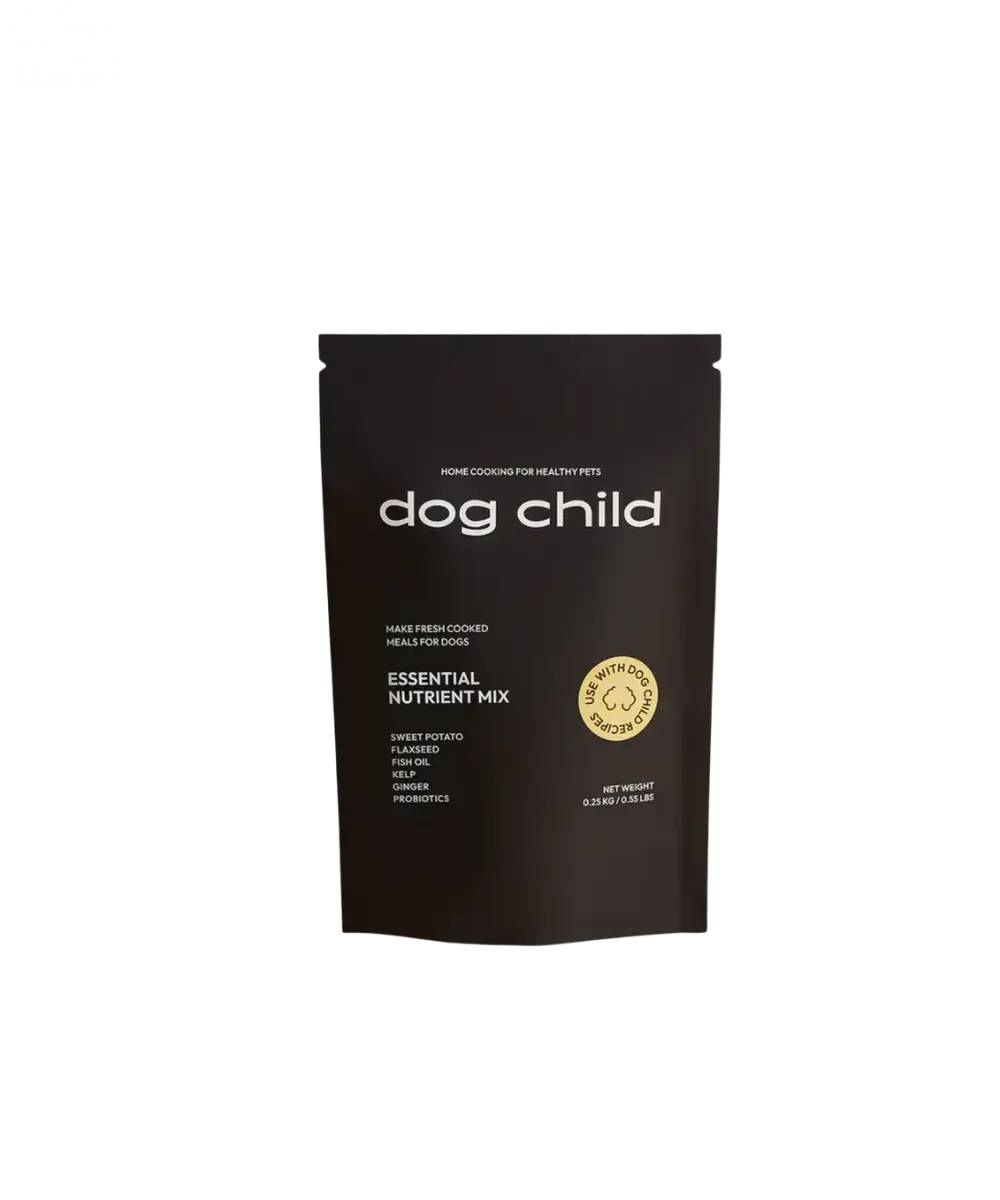
How to Transition Your Dog to Home-Cooked Food
Thinking about switching your dog to home-cooked meals? Whether you're looking for better ingredient control, improved digestion, or a more personalized diet, transitioning to homemade food can be a great choice — when done correctly.
This guide will walk you through the process, offering tips to make the switch as smooth as possible.
Why Consider Home-Cooked Pet Food?
Transitioning to homemade meals allows you to control the quality and variety of ingredients in your dog’s diet. Many pet parents find that fresh, whole-food diets for dogs and cats can improve their energy levels, coat condition, and overall health.
However, it’s important to ensure that homemade meals are nutritionally balanced. Dogs require specific nutrients, including proteins, fats, carbohydrates, vitamins, and minerals, in the right proportions. Consulting a veterinary nutritionist is highly recommended to create a meal plan tailored to your dog’s age, breed, weight, and health needs.
The 10-Day Transition Plan
A gradual transition is key to avoiding digestive upset and helping your dog adjust to their new diet. While some sources recommend a seven-day transition, a ten-day plan is ideal, especially for sensitive pets. Here’s how to do it:
Days 1-3:
-
Mix 25% of home-cooked food with 75% of your dog’s current food.
-
Monitor your dog for any signs of digestive discomfort, such as diarrhea or vomiting.
Days 4-6:
-
Increase the proportion of home-cooked pet food to 50%, while reducing their current food to 50%.
-
Continue to observe your dog’s behavior and stool quality.
Days 7-9:
-
Shift to 75% home-cooked pet food and 25% of their current food.
-
This stage is critical, as your dog’s digestive system is adapting to the new diet.
Day 10:
-
Fully transition to 100% home-cooked meals.
-
Celebrate this milestone, but remain vigilant for any changes in your dog’s health or appetite.
Key Components of a Home-Cooked Balanced Pet Diet
A common misconception is that feeding your dog home-cooked meals simply means giving them what you eat. However, dogs have specific nutritional requirements that differ from humans. A balanced diet for dogs should include:
-
Protein: Lean meats like chicken, turkey, or beef provide essential amino acids. Fish such as salmon is also excellent for omega-3 fatty acids.
-
Carbohydrates: Include complex carbohydrates like brown rice, quinoa, or sweet potatoes for energy.
-
Fats: Healthy fats, such as those found in fish oil or flaxseed, support skin and coat health.
-
Vitamins and minerals: Incorporate a variety of vegetables like spinach, carrots, and green beans. A veterinary nutritionist can recommend supplementing homemade pet food to ensure there are no deficiencies.
Tips for a Successful Transition
-
Start with simple recipes: Begin with easily digestible ingredients like lean proteins (chicken, turkey, or beef), cooked grains (rice or quinoa), and steamed vegetables (carrots, green beans, or sweet potatoes). Avoid seasonings, onions, garlic, and other ingredients that can be toxic to dogs.
-
Use supplements when needed: Homemade diets often require supplements to ensure they meet all of your dog’s nutritional needs. Common supplements include calcium, fish oil, and vitamin E. A veterinary nutritionist can recommend the right supplements for your dog.
-
Monitor portion sizes: Overfeeding or underfeeding can lead to weight gain or nutrient deficiencies. Use a calorie calculator or consult your vet to determine the appropriate portion size for your dog’s size and activity level.
-
Stay consistent: Dogs thrive on routine, so aim to feed them at the same times each day. Consistency helps regulate their digestion and makes the transition easier.
-
Watch for allergies or sensitivities: Introduce new ingredients one at a time to identify any potential allergies. Common signs of food allergies include itching, ear infections, and gastrointestinal issues.
The Role of Veterinary Guidance
While home-cooked pet food can be a healthy choice, it must be nutritionally complete. A veterinary nutritionist can help you design a balanced diet and ensure your dog receives all the essential nutrients. Regular check-ups are also important to monitor your dog’s health and adjust their diet as needed.
Final Thoughts
Transitioning your dog to home-cooked food is a thoughtful way to provide them with fresh, wholesome nutrition. If you follow the guide above, your dog will be enjoying fully home-cooked meals in 10 days!
At My Pet Grocer, we’re here to support you on this journey with educational resources for safe home cooking for pets and high-quality ingredients to help you create balanced, homemade meals for your beloved companion. Together, we can make mealtime a healthier, happier experience for your pet.


